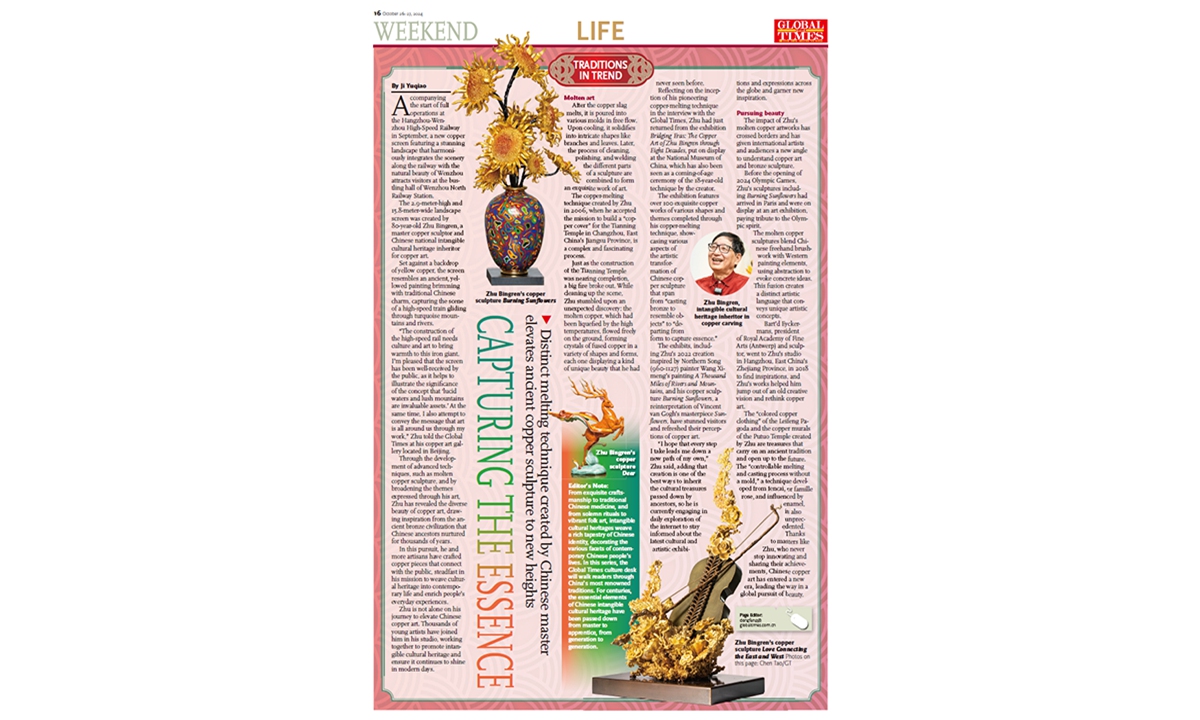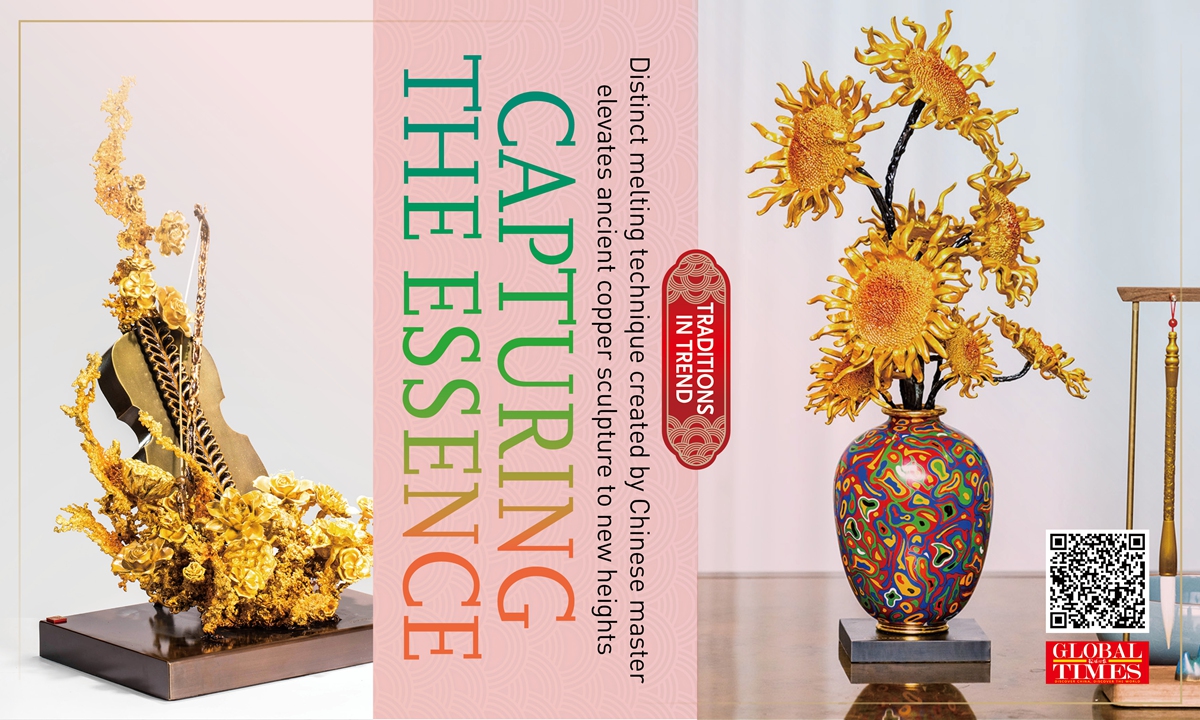Editor's Note:From exquisite craftsmanship to traditional Chinese medicine, and from solemn rituals to vibrant folk art, intangible cultural heritages weave a rich tapestry of Chinese identity, decorating the various facets of contemporary Chinese people's lives. In this series, the Global Times culture desk will walk readers through China's most renowned traditions. For centuries, the essential elements of Chinese intangible cultural heritage have been passed down from master to apprentice, from generation to generation.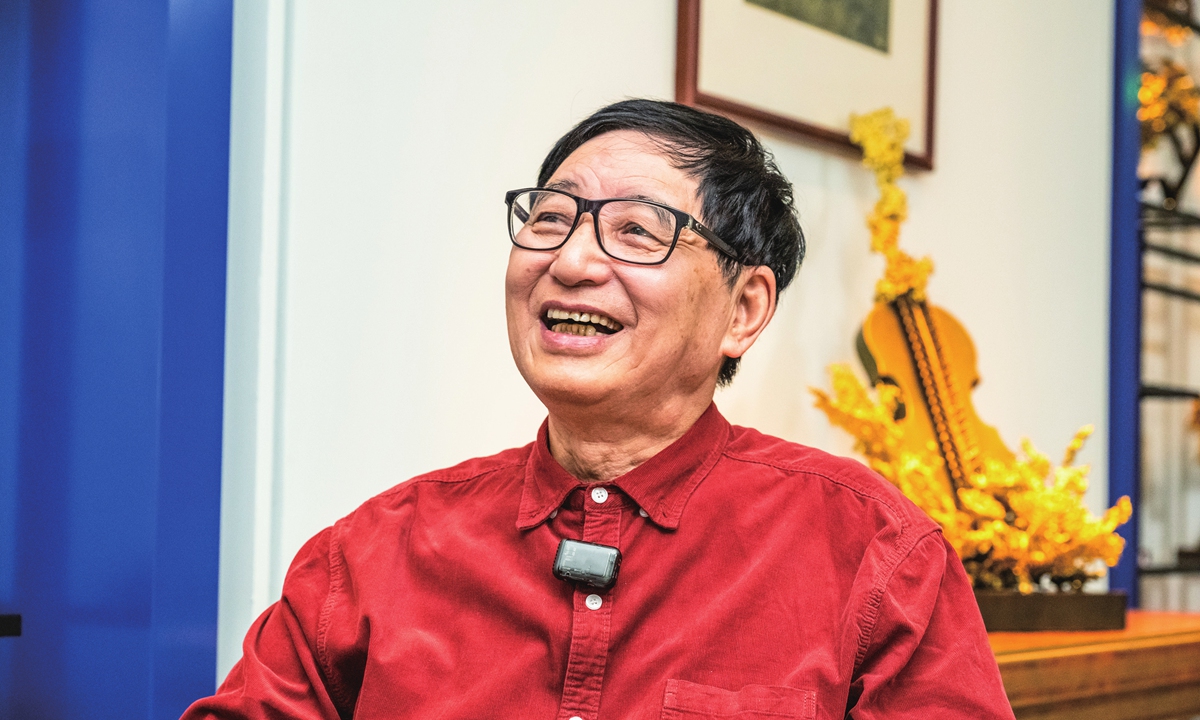
Zhu Bingren, intangible cultural heritage inheritor in copper carving Photos: Chen Tao/GT
Accompanying the start of full operations at the Hangzhou-Wenzhou High-Speed Railway in September, a new copper screen featuring a stunning landscape that harmoniously integrates the scenery along the railway with the natural beauty of Wenzhou attracts visitors at the bustling hall of Wenzhou North Railway Station.
The 2.9-meter-high and 15.8-meter-wide landscape screen was created by 80-year-old Zhu Bingren, a master copper sculptor and Chinese national intangible cultural heritage inheritor for copper art.
Set against a backdrop of yellow copper, the screen resembles an ancient, yellowed painting brimming with traditional Chinese charm, capturing the scene of a high-speed train gliding through turquoise mountains and rivers.
"The construction of the high-speed rail needs culture and art to bring warmth to this iron giant. I'm pleased that the screen has been well-received by the public, as it helps to illustrate the significance of the concept that 'lucid waters and lush mountains are invaluable assets.' At the same time, I also attempt to convey the message that art is all around us through my work," Zhu told the Global Times at his copper art gallery located in Beijing.
Through the development of advanced techniques, such as molten copper sculpture, and by broadening the themes expressed through his art, Zhu has revealed the diverse beauty of copper art, drawing inspiration from the ancient bronze civilization that Chinese ancestors nurtured for thousands of years.
In this pursuit, he and more artisans have crafted copper pieces that connect with the public, steadfast in his mission to weave cultural heritage into contemporary life and enrich people's everyday experiences.
Zhu is not alone on his journey to elevate Chinese copper art. Thousands of young artists have joined him in his studio, working together to promote intangible cultural heritage and ensure it continues to shine in modern days.
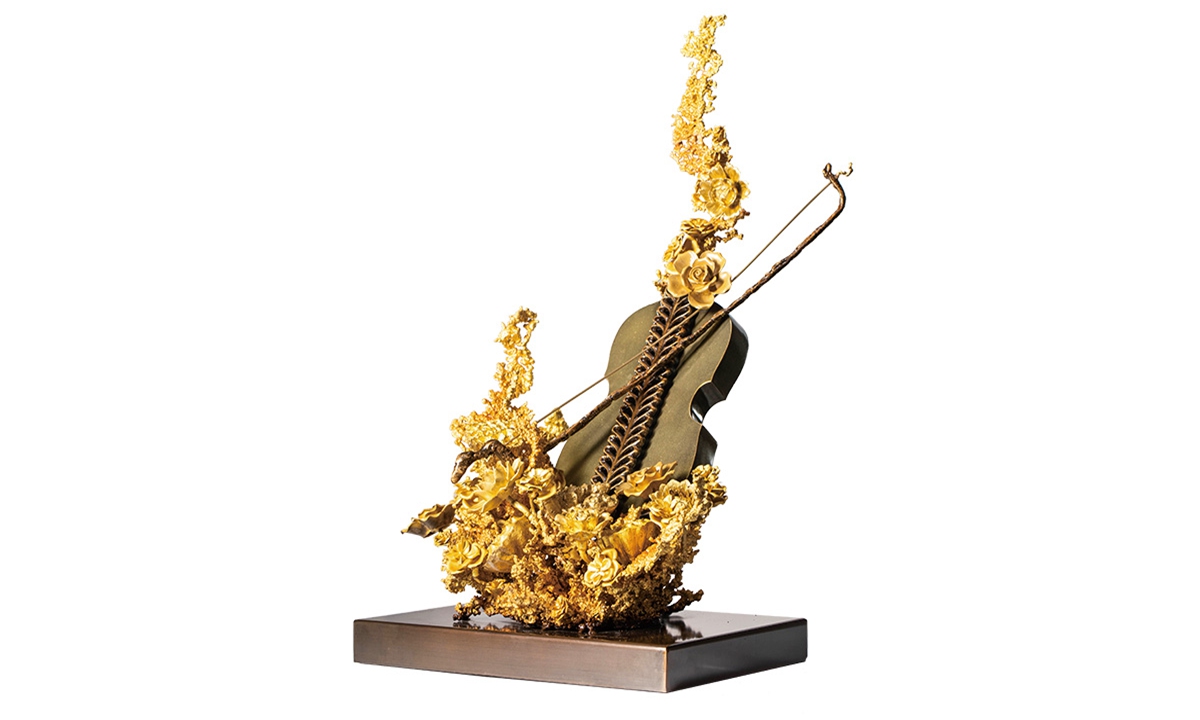
Zhu Bingren's copper sculpture Love Connecting the East and West
Molten artAfter the copper slag melts, it is poured into various molds in free flow. Upon cooling, it solidifies into intricate shapes like branches and leaves. Later, the process of cleaning, polishing, and welding the different parts of a sculpture are combined to form an exquisite work of art.
The copper-melting technique created by Zhu in 2006, when he accepted the mission to build a "copper cover" for the Tianning Temple in Changzhou, East China's Jiangsu Province, is a complex and fascinating process.
Just as the construction of the Tianning Temple was nearing completion, a big fire broke out. While cleaning up the scene, Zhu stumbled upon an unexpected discovery: the molten copper, which had been liquefied by the high temperatures, flowed freely on the ground, forming crystals of fused copper in a variety of shapes and forms, each one displaying a kind of unique beauty that he had never seen before.
Reflecting on the inception of his pioneering copper-melting technique in the interview with the Global Times, Zhu had just returned from the exhibition
Bridging Eras: The Copper Art of Zhu Bingren through Eight Decades, put on display at the National Museum of China, which has also been seen as a coming-of-age ceremony of the 18-year-old technique by the creator.
The exhibition features over 100 exquisite copper works of various shapes and themes completed through his copper-melting technique, showcasing various aspects of the artistic transformation of Chinese copper sculpture that span from "casting bronze to resemble objects" to "departing from form to capture essence."
The exhibits, including Zhu's 2022 creation inspired by Northern Song (960-1127) painter Wang Ximeng's painting
A Thousand Miles of Rivers and Mountains, and his copper sculpture
Burning Sunflowers, a reinterpretation of Vincent van Gogh's masterpiece
Sunflowers, have stunned visitors and refreshed their perceptions of copper art.
"I hope that every step I take leads me down a new path of my own," Zhu said, adding that creation is one of the best ways to inherit the cultural treasures passed down by ancestors, so he is currently engaging in daily exploration of the internet to stay informed about the latest cultural and artistic exhibitions and expressions across the globe and garner new inspiration.
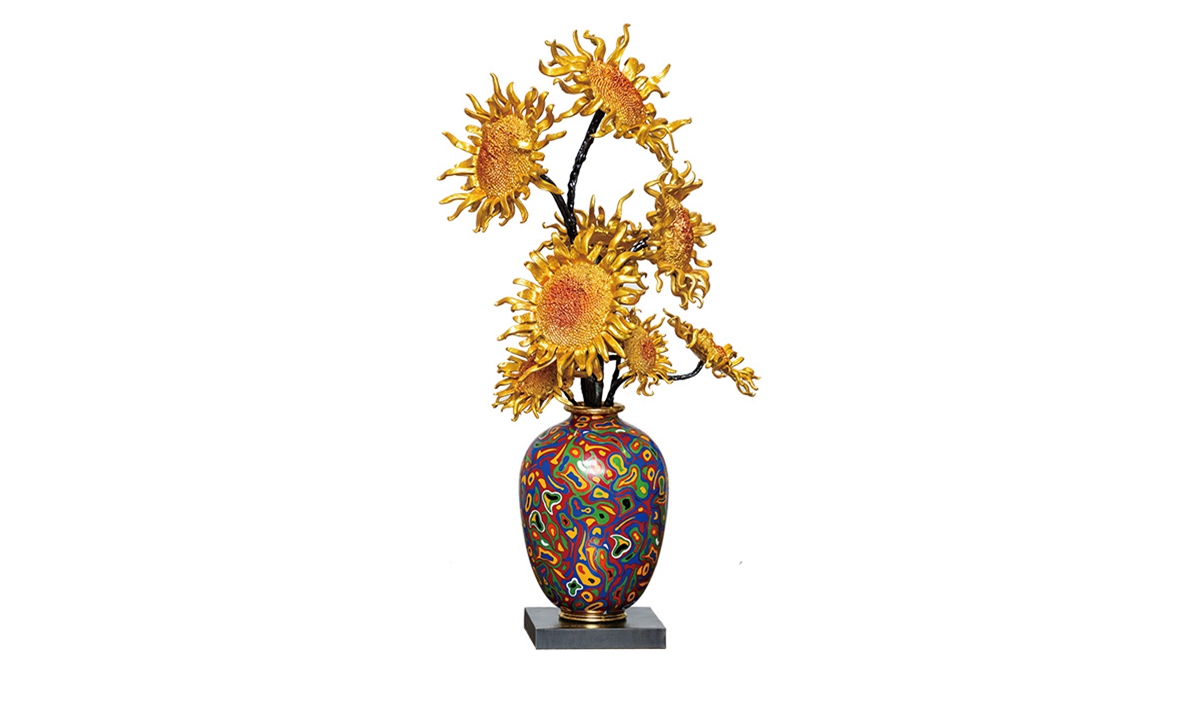
Zhu Bingren's copper sculpture Burning Sunflowers
Pursuing beauty The impact of Zhu's molten copper artworks has crossed borders and has given international artists and audiences a new angle to understand copper art and bronze sculpture.
Before the opening of 2024 Olympic Games, Zhu's sculptures including
Burning Sunflowers had arrived in Paris and were on display at an art exhibition, paying tribute to the Olympic spirit.
The molten copper sculptures blend Chinese freehand brushwork with Western painting elements, using abstraction to evoke concrete ideas. This fusion creates a distinct artistic language that conveys unique artistic concepts.
Bart'd Eyckermans, president of Royal Academy of Fine Arts (Antwerp) and sculptor, went to Zhu's studio in Hangzhou, East China's Zhejiang Province, in 2018 to find inspirations, and Zhu's works helped him jump out of an old creative vision and rethink copper art.
The "colored copper clothing" of the Leifeng Pagoda and the copper murals of the Putuo Temple created by Zhu are treasures that carry on an ancient tradition and open up to the future. The "controllable melting and casting process without a mold," a technique developed from fencai, or famille rose, and influenced by enamel, is also unprecedented.
Thanks to masters like Zhu, who never stop innovating and sharing their achievements, Chinese copper art has entered a new era, leading the way in a global pursuit of beauty.
